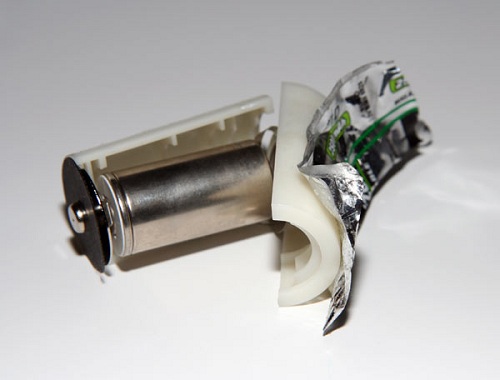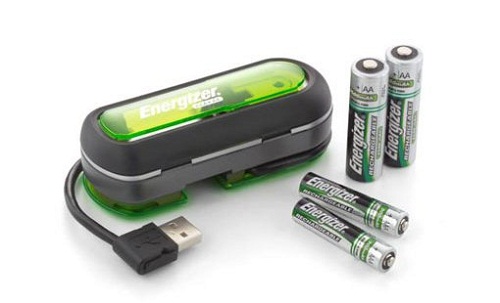
By Chris Scott Barr
Here’s something interesting, it seems that Energizer is screwing customers who purchase rechargeable D batteries. Specifically, the Energizer E2 D batteries. People have noticed that these batteries seem weaker, and actually physically lighter than comparable batteries. Well upon closer inspection, it is found that they are rated at 2500mAh each, the same as a standard AA battery. An average single-use D battery is rated at around 12,000mAh. Guess what that means?
That’s right, if you tear open one of these batteries (I don’t usually recommend opening batteries, as it’s just a bad idea) you’ll find a something that resembles a AA battery inside a plastic case. Granted, the shape is a bit different, but the capacity is exactly the same. So for $25 you are essentially getting the same thing as a $6 pair of AA’s and a pair of cheap (we’re talking a couple bucks each) AA-to-D converters. For shame Energizer, for shame!
VIA [ NaturalNews ]





What a rip of! Here is what I found on Energizers own site, in the their “Business Practices & Standards of Conduct” document: “Remember – in all of your business dealings, you must be truthful and avoid deception. You should not take unfair advantage of anyone through manipulation, concealment, abuse of privileged information, misrepresentation of facts, or any other unethical business practice.” Link to entire document:http://www.energizer.com/SiteCollectionDocuments/pdf/about_energizer/BPSCEnglish.pdf
Just to be the devil's advocate, does saying it's a D define its physical size or power it carries? I'm sure the package says it's a D with 2500mAh. And the AA package says it's an AA with 2500mAh. Guess we should start reading packages a bit more carefully. 🙂
Nobody is getting screwed over. Stop being so sensationalist, and stop getting your news from a website advocating things like herbal remedies to swine flu.
Battery capacity is indicated by mAh rating. AA or D is just an indication of physical size.
It's common industry practice to pack smaller batteries in to larger physical containers like this.
Scheesh – I actually have purchased battery shells so that I could use my high capacity 'AA' batteries and the very expensive charger with all sizes of batteries. Saved a bunch of cash doing that. Read the mAh ratings before purchasing anything.
I'm not sure that because it's common industry practice, that makes it ok. The whole point of having D cells is for greater capacity. Otherwise, why bother?
Historical reasons. Capacity is clearly marked on the packages.
Remember that a NiMH battery will self discharge at a rate of between 10-30% each month. So over the course of 6 months, a NiMH battery will be effectively DEAD. Doesn't matter if its a 10000mAh battery or a 2500 mAh battery.
So if you have an application for an alkaline D-cell that lasts 6 months, a D-cell NiMH won't last that long. You're going to need to recharge the NiMH frequently. And if you're going to charge it right before use… there is no use spending extra for a beefier NiMH battery.
Basically, I don't think that NiMH batteries as a technology are suited for long term, high capacity applications that a D Cell is likely to be used for. The smaller battery is probably a decent cost/benefit trade off.
At BestBuy.com, 2500mAh D cells are $6 each (not sure where the article's $25 comes from). 2500mAh AA cells are $4 each. That seams like a fair mark up for the added rarity of D-cell sand the extra materials.
The vast majority of rechargeable D batteries are similar. True D rechargeables are many times more expensive than either AA's or AA's in a D shell. .
The reason you might want D sized batteries with no additional capacity is if you have a device that takes D sized batteries and aren't willing to pay for extra capacity…
The vast majority of rechargeable D batteries are similar. True D rechargeables are many times more expensive than either AA's or AA's in a D shell. .
The reason you might want D sized batteries with no additional capacity is if you have a device that takes D sized batteries and aren't willing to pay for extra capacity…